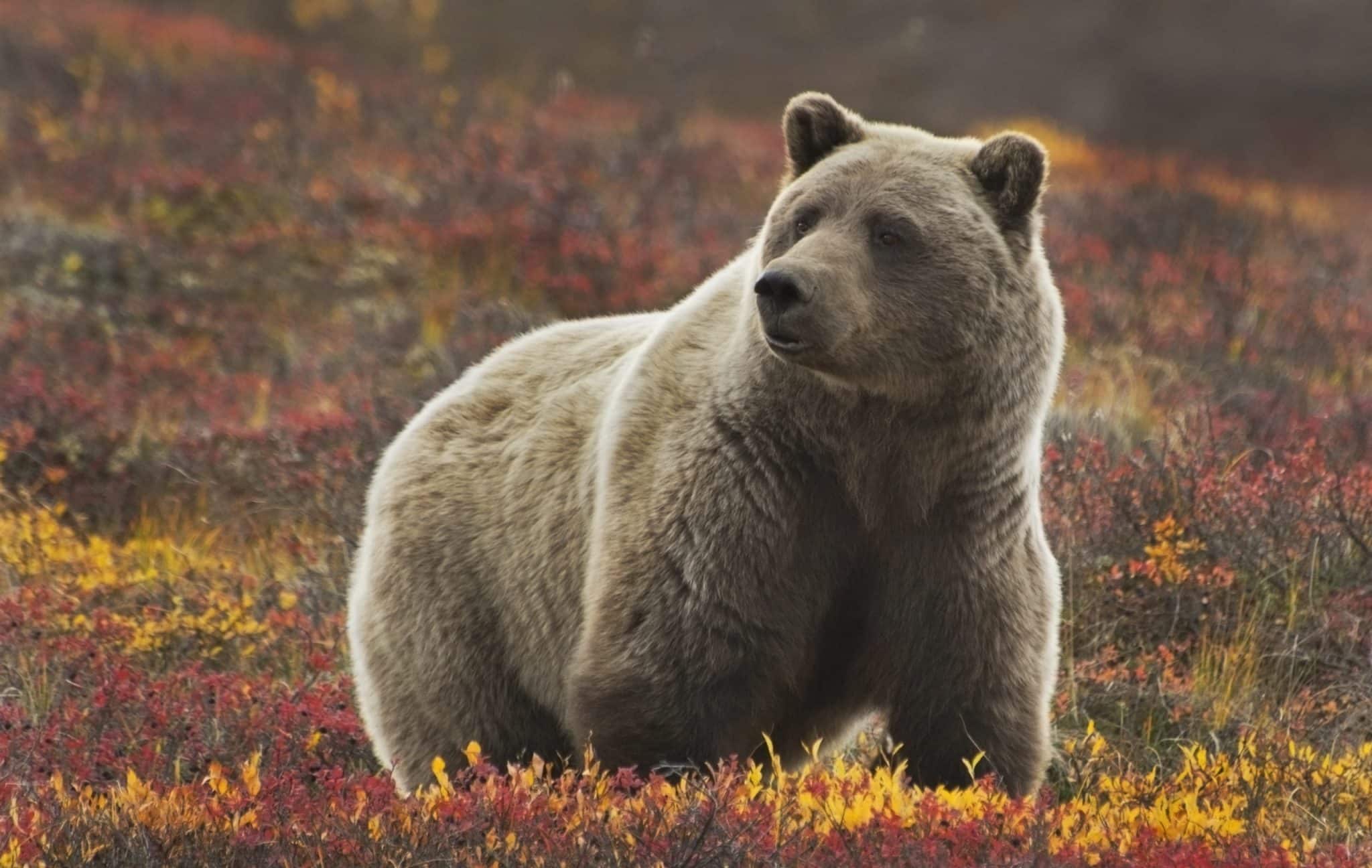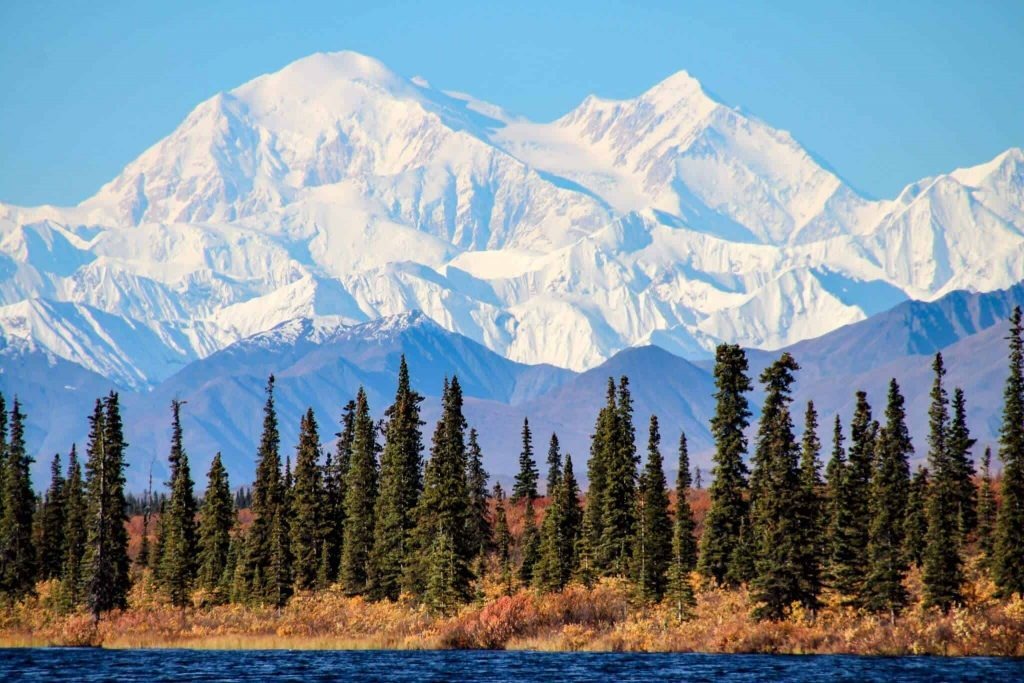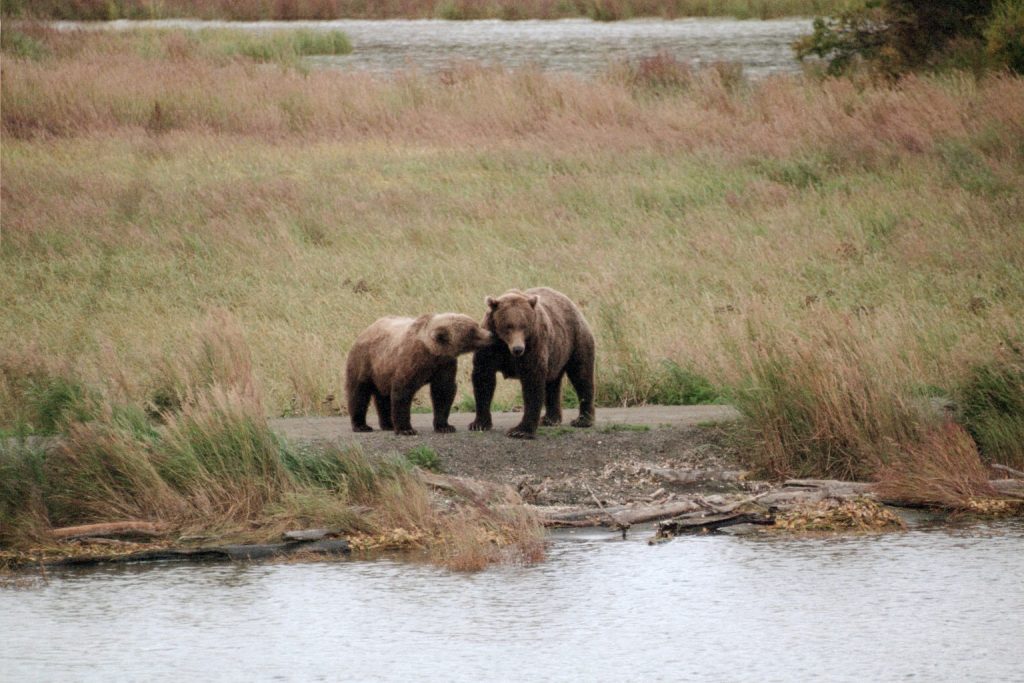ALASKAN VIEWPOINT: An Insider’s Scoop for Exploring Alaska’s Best!
“Are grizzly bears and brown bears the same thing?” is a common question from our visitors.

While brown bears and grizzlies are the same species, “brown bear” is most commonly used to specify the larger coastal bears. “Grizzly” is used for the interior and northern resident bears of Alaska. Brown bears reside throughout most of Alaska, with an estimated statewide population of 30,000.
Autumn is an eventful time in Alaska with all wildlife preparing for winter, and the bears are great examples.
By this time of year, they are visibly fattening up for winter hibernation, gaining up to 30 pounds a week. Some bears will even double their body weight by late fall. Adult males average between 500-900 pounds, and even up to 1,400 pounds. Females weigh half to ¾ as much as males.
Hibernation for brown bears doesn’t mean they sleep the entire winter. They remain in hibernation between 5–7 months, depending on where in Alaska they are located. While in hibernation state their body temperature typically drops by 8-12 degrees. Even more amazing is their heart rate slows by up to 80%, and they only breath 1-2 times per minute!
While in the den, they don’t need to eat or drink. They drop up to 33% of their body weight during this time, yet lose very little muscle mass despite months of inactivity. Research to understand this ability is ongoing, with hopes that the findings will help bedridden patients and the elderly.

Sows give birth about 2 months into hibernation, and the den gives the tiny cubs a safe place to grow.
A female bear (sow) will hold fertilized eggs in her womb from the summer mating season. Those eggs implant into her uterus shortly before hibernation. If she doesn’t gain enough weight by then, the eggs will often spontaneously abort.
A baby brown bear weighs only about a pound at birth, born blind and quite helpless. Twins are the most common, but there can be anywhere between 1-4, and occasionally as many as 6 cubs. They spend the winter living on their mother’s milkfat, and weigh an average of 11-12 pounds when emerging from the den in the spring.
These iconic Brown bears appear throughout most of the state

Observe Alaska grizzly bears in wide open areas of tundra such as that found in Denali National Park, or where a food supply is highly concentrated, like Katmai National Park. Their colors are more varied than most people realize, from shades of light blonde to almost black, and everything in between. They are fascinating animals, and the opportunity to view them in their natural habitat is a highlight for many visitors – which makes local bear viewing tours popular.
Visit the Alaska Wildlife Conservation Center, for viewing orphaned or injured bears. It will be a sight to remember.
Bear viewing day tours are easy additions before or after any ATG tour or during our 12 day Ultimate Alaskan Adventure tours while visiting Homer, Alaska.
